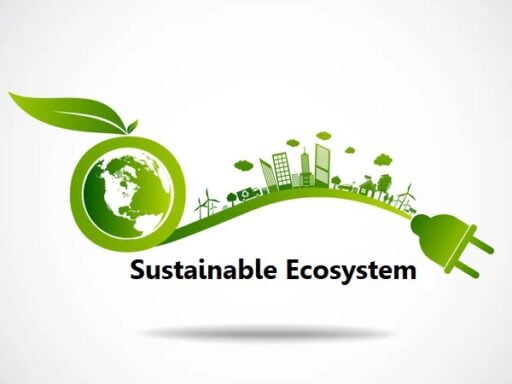In today’s quickly changing corporate world, technology is critical in promoting openness across industries. From supply chain management to customer relations, technological integration has transformed traditional business, processes resulting in more responsibility, efficiency, and trustworthiness. Let’s look at how technology and transparency may promote openness and what this means for modern enterprises.
In addition to encouraging openness, technology plays an important role in increasing transparency inside modern businesses. Businesses can gain greater visibility into their operations, supply chains, and performance measures by implementing advanced digital tools and platforms. Real-time data analytics enables businesses to monitor and track critical parameters, identify potential dangers, and handle issues before they worsen. Furthermore, technologies such as blockchain provide immutable and transparent records, allowing for safe and traceable transactions throughout the supply chain. Embracing technology-driven transparency not only increases accountability, but it also builds trust among stakeholders like as consumers, investors, and regulators. As organizations continue to use technology to increase transparency. By position themselves as leaders in supporting integrity, sustainability, and ethical business practices in today’s fast-paced corporate landscape.
Supporting Technology and Transparency
In an era of unprecedented connection and information exchange, businesses are increasingly using technology to improve transparency. Organizations can achieve higher transparency levels by using advanced data analytics, blockchain tech, and AI. This lets stakeholders monitor operations, transactions, and performance indicators instantly. Embracing transparency helps build trust with customers, investors, and regulators, fostering long-term growth and competitive advantage.
Besides to advanced data analytics, blockchain technology, and artificial intelligence (AI), firms are using cutting-edge tools like IoT sensors and machine learning algorithms to increase transparency. These technologies allow for real-time monitoring of environmental effect, product traceability, and supply chain integrity. Companies can use IoT devices and predictive analytics to proactively detect possible risks and opportunities. Moreover maximize resource use, and assure regulatory compliance. Furthermore, AI-powered algorithms can scan massive volumes of data to identify patterns, anomalies, and trends, giving important insights for decision-making and risk management. Taking a holistic approach to transparency incorporates a variety of technical solutions. This not only enhances stakeholder trust but also develops creativity and resilience in today’s linked business world.

Using Technology for Supply Chain Transparency
One sector where technology has improved transparency is supply chain management. Businesses may obtain complete visibility into their supply chains by using IoT sensors, RFID tags, and blockchain-enabled platforms. These techs track the movement of items from raw materials to ultimate delivery. “This helps to reduce risks like counterfeit items and supply chain interruptions. It also enables businesses to maintain ethical standards and environmental sustainability in their operations.”
Moreover, technology-driven supply chain transparency improves accountability and sustainability throughout the manufacturing process. Businesses may assure ethical and environmental compliance by leveraging IoT sensors, RFID tags, and blockchain-enabled platforms. Real-time tracking of items from inception to delivery reduces the danger of counterfeit products. Also enabling proactive risk management and mitigation techniques. Additionally, improved supply chain visibility allows businesses to discover inefficiencies, streamline logistics, and reduce waste, resulting in cost savings and operational improvements. Businesses that embrace technology-driven openness in supply chain management may increase resilience. This can boost stakeholder trust and promote long-term success in today’s competitive environment.
Enhancing Customer Trust through Data Transparency
In the age of data-driven decision-making, maintaining transparency about data usage and privacy is critical to establishing and sustaining consumer trust. Businesses can demonstrate their dedication to protecting consumer privacy. Also it’s complying with regulations by using strong data protection methods such as encryption, anonymization, and user consent processes. Transparent communication builds confidence. Data collection, storage, and usage methods are communicated. This fosters loyalty among customers. Long-term value and brand reputation result.
In today’s digital world, where data privacy is crucial, organizations must prioritize transparency in their data practices. This is necessary in order to gain and maintain confidence among customers. Companies can reassure clients about their commitment to protecting their personal information by employing strong data protection methods. These methods include encryption, anonymization, and stringent user consent processes. Transparent communication about data collection, storage, and usage practices not only aids in regulatory compliance, but also encourages consumer trust and confidence. When customers are convinced that their data is being managed safely and ethically, they are more likely to establish brand loyalty. This leads to long-term value creation and a positive reputation in the market.
Creating an Accountable and Transparent Culture
Technology helps organizations cultivate a culture of transparency and accountability. Businesses can encourage open communication and empower employees by implementing collaboration tools, project management software, and performance analytics platforms. This helps build a sense of ownership and responsibility among employees. Transparent leadership, along with easily available information-sharing channels, allows firms to match their actions with their values. This leave good results in increasing employee engagement, innovation, and organizational resilience.
Technology acts as a catalyst for creating a culture of transparency and accountability within enterprises. Moreover, businesses can promote open communication channels and enable people to take responsibility for their work by employing collaboration tools, project management software, and performance analytics platforms. Transparent leadership reinforces this culture by connecting behaviors to organizational principles and encouraging honesty and integrity at all levels. As a result, employees are more engaged and encouraged to provide innovative ideas, which increases organizational resilience and adaptability in the face of adversity. Finally, this commitment to transparency improves not only internal operations but also external interactions with stakeholders, thereby reinforcing trust and credibility in the organization’s brand.

FAQs
🤔 How does technology and transparency contribute in supply chain?
Answer: Blockchain and IoT technology offer real-time tracking and monitoring of supply chain processes, ensuring transparency and accountability at all stages.
🤔 What role does data transparency play in building customer trust?
Answer: Transparent communication about data usage and privacy rules helps organizations gain customer trust. Additionally, it demonstrates a commitment to preserving personal information and adhering to ethical norms.
🤔 How can organizations promote transparency at the workplace?
Answer: Businesses may develop a culture of openness and accountability by utilizing collaboration tools and encouraging open communication, empowering employees and driving success for the organization.
🤔 What are some benefits of embracing transparency in business operations?
Answer: Moreover, transparent company procedures boost credibility, build stakeholder confidence, reduce risks, increase efficiency, and promote ethical behavior. All of these factors contribute to long-term growth and success.
🤔 What are some examples of technology and transparency initiatives in industries?
Answer: Blockchain technology is being adopted for supply chain traceability, AI-powered analytics for financial transparency, and digital platforms for transparent communication with partners.
🤔 How can businesses ensure transparency when implementing new technologies?
Answer: Businesses can prioritize transparency by clearly expressing their tech adoption strategies, data usage regulations, and security measures to stakeholders. Additionally, they can provide opportunities for feedback and responsibility.
Conclusion
To summarize, technology acts as a catalyst for transparency, altering established business paradigms and creating new chances for growth and innovation.Businesses can use technology to develop trust, promote efficiency, and confidently navigate challenging situations. Moreover, as we continue to embrace digital transformation, the integration of technology and transparency will be critical to building a more equal, accountable, and sustainable business environment.








